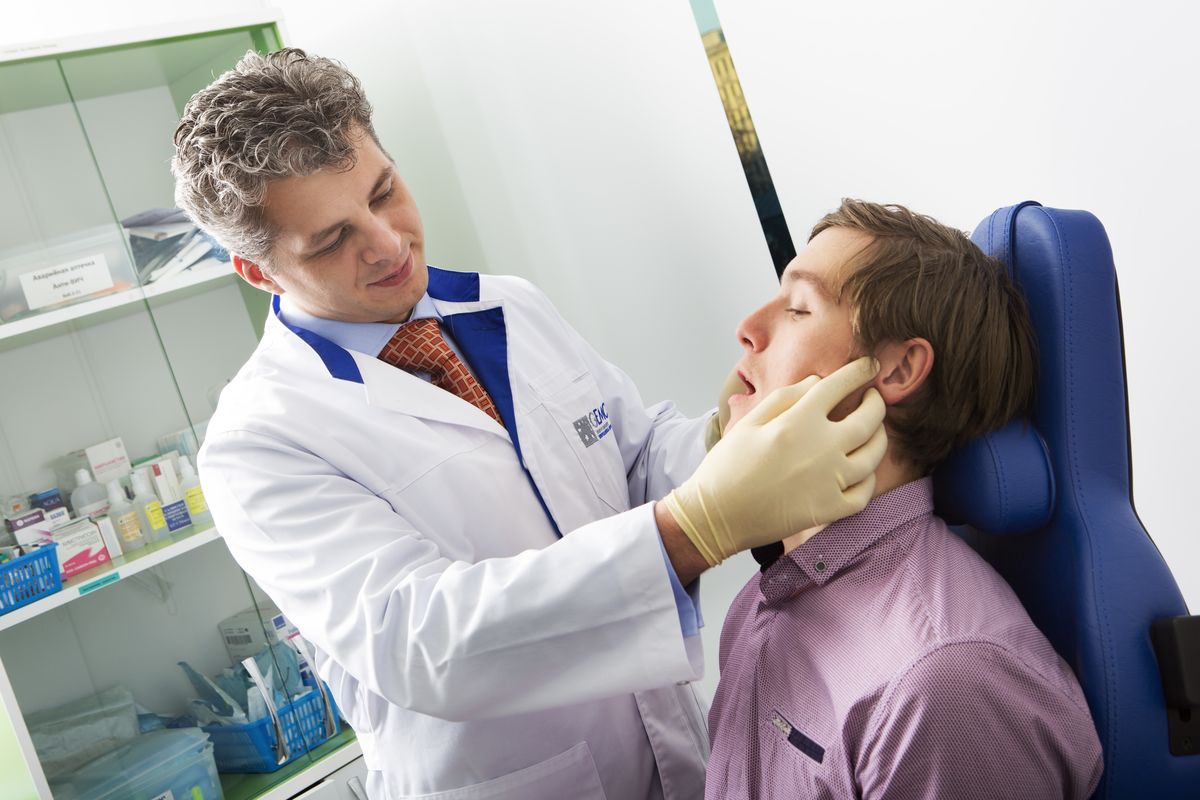Osteonecrosis of the jaw
Narrated by Roman Kutsenko,
maxillofacial surgeon, Ph.D.

Osteonecrosis is the process of destruction or death of bone tissue cells.
Types of osteonecrosis of the jaw
It is customary to distinguish three types of osteonecrosis:
- Desomorphine osteonecrosis. Necrosis of the bones of the facial skeleton associated with the use of synthetic drugs, pervitin or desomorphine. Bisphosphonate osteonecrosis. A necrotic process in bone tissue associated with a peculiarity of metabolism and exposure to bisphosphonate-type drugs prescribed for osteoporosis or cancer.
- Radiation osteonecrosis. It may occur after several years in the area of radiation therapy in the treatment of cancer.
Causes of occurrence
There are several known reasons why osteonecrosis develops. The most common of these is treatment with bisphosphonate-type drugs. They are the main treatment for:
- osteoporosis,
- bone pathologies associated with impaired calcium metabolism,
- conditions with increased bone resorption,
- bone tissue damage by metastases of malignant neoplasms of various localization.
Bisphosphonates are part of the complex therapy of patients with various oncological diseases.
Osteonecrosis of the jaw is a serious complication that occurs in patients taking bisphosphonates after almost any dental intervention: occupational hygiene, tooth extraction, dental implantation, etc.
The duration of accumulation of drugs in the bone tissue and the type of drug used are also important for the development of this complication. According to some reports, even the generation of the bisphosphonate-type drug used is important.

Symptoms
The first sign of osteonecrosis of the jaw is facial pain. Then there are inflammatory phenomena of soft tissues, bleeding gums, periodontitis, mobility of teeth adjacent to the focus of inflammation, impaired sensitivity in the area of inflammation. There is a putrid smell from the mouth.
Over time, part of the affected bone is exposed, forming a growing ulcerative defect in the oral mucosa. In some cases, fistulas on the face and neck may be one of the manifestations of osteonecrosis of the mandible. As the pathological process develops and deepens, spontaneous (pathological) fractures of the jaws may occur.
Diagnosis of osteonecrosis
Osteonecrosis is diagnosed during a clinical examination. The degree of damage, the prevalence of the pathological process, the presence of fractures, and loose bone fragments (sequesters) can be determined by computed tomography.

How to treat osteonecrosis
Treatment of osteonecrosis is aimed at preventing the occurrence of purulent-septic complications and the progression of bone destruction.
Drug therapy
Drug therapy is reduced to complex anti-inflammatory treatment. These include taking broad-spectrum antibiotics, antihistamines, and using antiseptics to rinse the mouth. In case of pain, analgesics are prescribed.
Surgical intervention
The main method of treatment is surgical intervention.
In some cases, active surgical tactics are used to remove necrotic bone tissue within a visually healthy bone. Sometimes doctors act more conservatively, only removing loose sequesters.
As a rule, necrotic tissues are removed at the first stage, and treatment is carried out to stop the inflammatory process in the surrounding tissues. The second stage is a reconstructive surgery, the purpose of which is to replenish the defect or deformity of the maxillofacial region formed by the inflammatory process.
Prevention
Prevention of osteonecrosis consists in a special way of treating wounds of the oral cavity during surgical procedures. These wounds are potential trigger points for the start of the necrotic process.
Author: Roman Kutsenko, maxillofacial surgeon, PhD
Why the EMC
The first and only clinic in Russia, created in the image of the world's leading clinics
EMC is a multidisciplinary center offering patients a high level of medical services and a personalized approach
Worldwide recognition and awards
 Learn more
Learn more
Worldwide recognition and awards
 Certificates and licenses
Certificates and licenses
Make an appointment for a consultation
Specify your contacts and we will contact you to clarify the details
Reviews
and new products of the EMC








.webp)




.webp)

